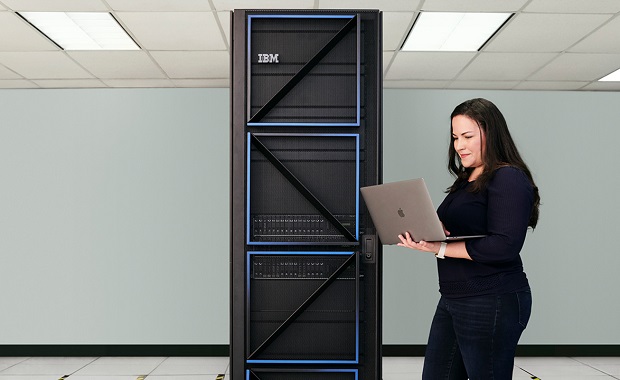As the pandemic brought on a dramatic shift emphasizing fast delivery of new services, IBM recently announced the new generation of IBM Power servers to help clients respond faster to rapidly changing business demands.

Leo Capinpin, country leader of IBM Infrastructure in the Philippines, gives Newsbytes.PH an exclusive view why businesses in the country still need systems like IBM Power in today’s cloud world.
Q: IBM today announced a significant expansion of its Power10 server line with the introduction of mid-range and scale-out systems. Tell us more about it.
A: Though we call this mid-range systems, the new Power10 servers can scale almost as big as the biggest Intel-based platform. Built around the next-generation IBM Power10 processor with 7nm processor manufactured by Samsung, tremendous amount of memory and compute capacity, 2x more cores and more than 2x memory bandwidth than previous Power generations, these systems bring enterprise capabilities to SMEs and remote-office/branch office environments. We continue with our tradition of delivering superior per-core performance to drive substantial TCO and sustainable benefits.
The new Power10 servers also come with flexible consumption offerings with pay-as-you-go options and by-the-minute metering, bringing more opportunities to help lower the cost of running various mission critical workloads and Red Hat OpenShift solutions on Power when compared against alternative platforms. It will allow smaller companies to lower the cost and move their IT investments from CapEx to OpEx.
Q: In today’s world, many companies talk about the importance of cloud adoption. Why do systems like IBM Power 10 matter?
A: Everywhere you look, companies face an acute need for speed to market, flexibility, nimbleness and, of course, ongoing innovation. These priorities are why companies are looking to take advantage of cloud computing.
But it is not that straightforward; it’s not just about hopping to public cloud. Strategically, organizations have concerns about optionality, about lock in, about discovering that their cloud providers have just become their competitors. The reality about data gravity, security and regulatory requirements, and the complexity of mission-critical applications also explain why so few clients have made a wholesale move to cloud. A single public cloud is rarely adequate.
The right IT investments are critical to business and operational resilience. Our new Power10 models offer clients a variety of flexible hybrid cloud choices with the agility and automation to best fit their needs, without sacrificing performance, security or resilience.
Cloud is a capability, not a place. This is why we also see proliferation of private clouds. It’s clear today that hybrid cloud is a powerful strategy for business transformation and innovation. The expansion of the IBM Power10 family has been engineered to offer clients a variety of flexible hybrid cloud choices with the agility and automation to best fit their needs, without sacrificing performance, security or resilience. Companies can have the flexibility to leverage our platforms both with the inherent benefits of public cloud; and on the flipside also take advantage of the economy of scale that exists within the data center of many organizations.
Q: Do traditional computing systems remain fundamental for many of the critical functions and underpin a hybrid cloud environment?
A: Let’s take data-intensive workloads such as SAP S/4HANA or mission critical banking workloads, for example. Traditional critical business workloads have traditionally needed to reside on-premises but then as workloads and needs spike, companies must be able to seamlessly scale applications to meet the dynamic needs.
IBM Power comes with a frictionless hybrid cloud experience, the architectural consistency across resources means the often-bespoke mission-critical applications that tend to reside on-premises can be moved into the cloud as workloads and needs demand. This allows users to scale up and down with unused CPU capacity as needed and only pay extra for the additional resources they used.
This can also help improve operational efficiency and flexibility while avoiding server sprawl and lengthy procurement processes by bringing a cloud-like payment model to the datacenter.
Q: Any example of how businesses in the Philippines are benefiting from systems like IBM Power?
A: In the Philippines, to stay ahead of the competition, keep afloat of the growing demand, and adapt to the rapidly changing purchasing habits of its extensive customer base, Wilcon Depot, the country’s leading home improvement and construction supplies retailer with a total of 76 operating stores nationwide, saw the need to build seamless and limitless customer experience across its stores, mobile and online channels.
The company has adopted IBM Power Systems, deployed by an IBM business partner PT&T, to run its Enterprise Resource Planning (ERP) system, which its core business operations, sales operations, inventory, and supply chain management systems rely on.
This adoption allows the recording of sales, forecasting, and inventory management of all its physical stores and e-commerce platform to be processed at speed, with greater efficiency, high reliability, security, and data protection from core to the cloud.
Known for its scalability and performance with the most critical workloads, IBM Power systems will also be key in ensuring that Wilcon’s ERP runs 24×7, supporting Wilcon’s continuous business expansion today and in the future.

Q: There have been a series of cyber incidents in the Philippines, does IBM Power also help companies protect themselves against the latest cybersecurity threats?
A: The new security tools of IBM Power 10 designed for hybrid cloud environments, which includes transparent memory encryption, comes with 4x the encryption engines per core, allowing for 2.5x faster AES encryption (compared to the IBM Power E980) and security software for every level of the system stack. So there is no additional management setup.
Not only do the new systems support critical security features such as transparent memory encryption and advanced processor/system isolation, but also leverage the OpenBMC project from the Linux Foundation for high levels of security for the new scale-out servers.




